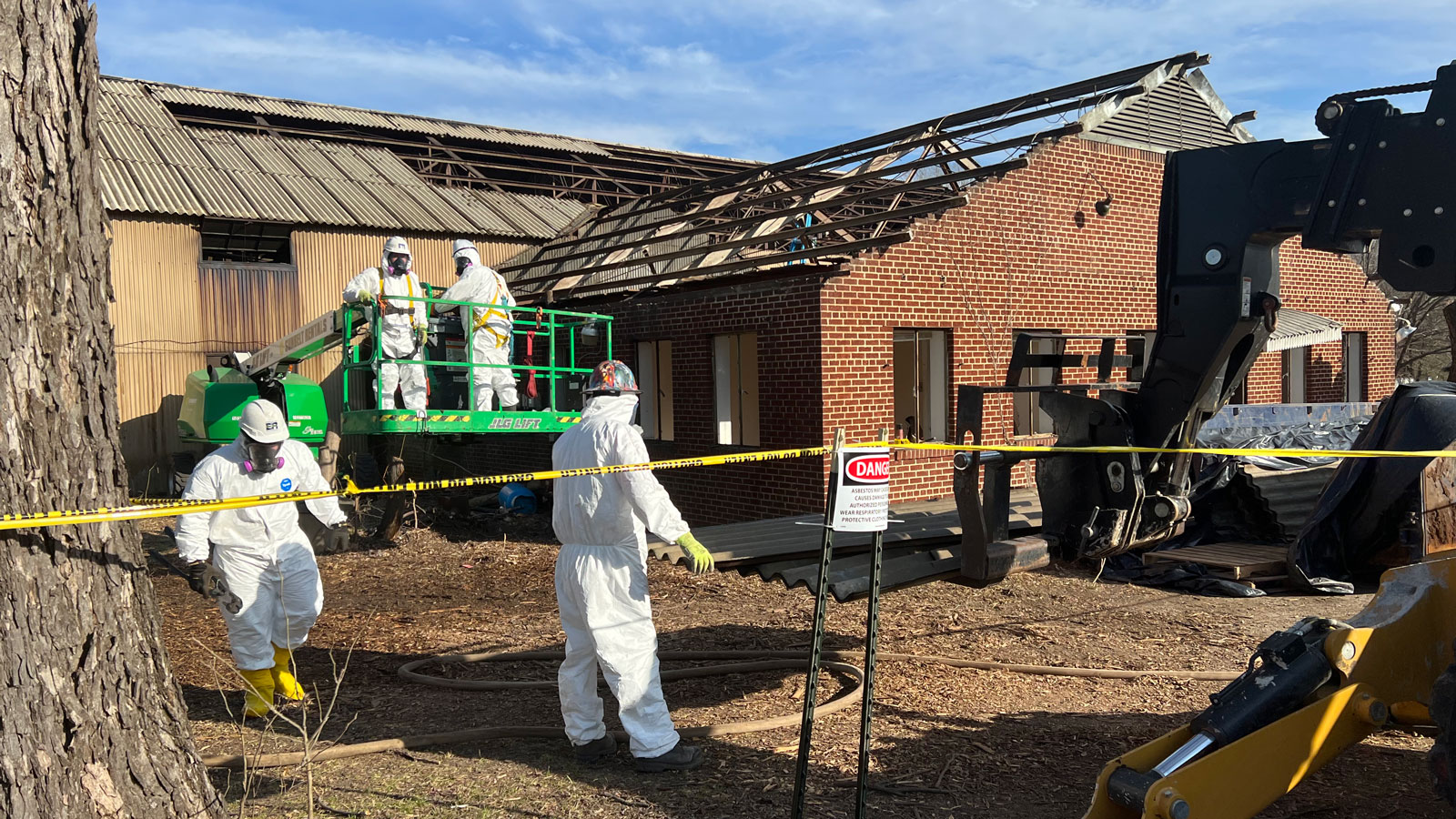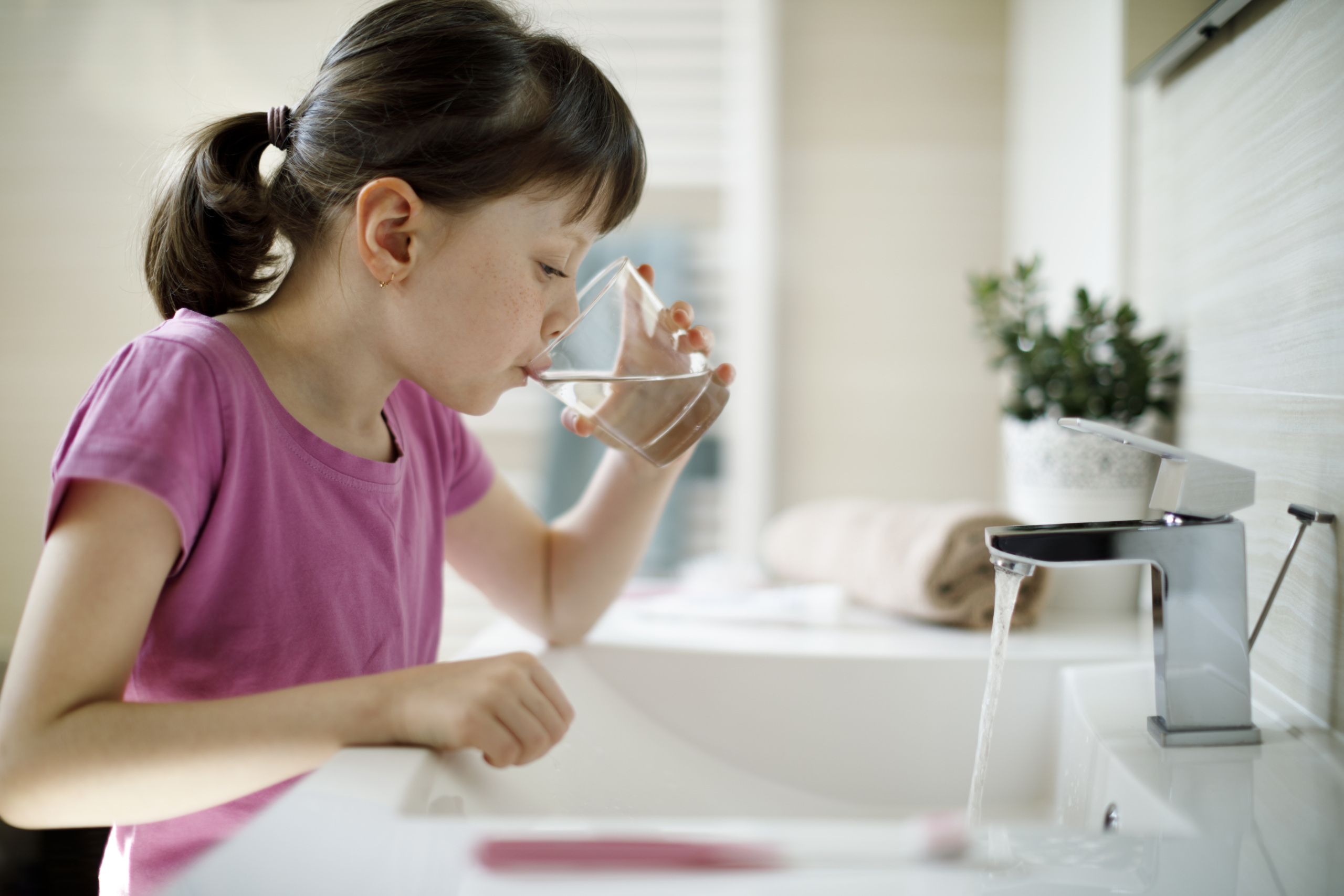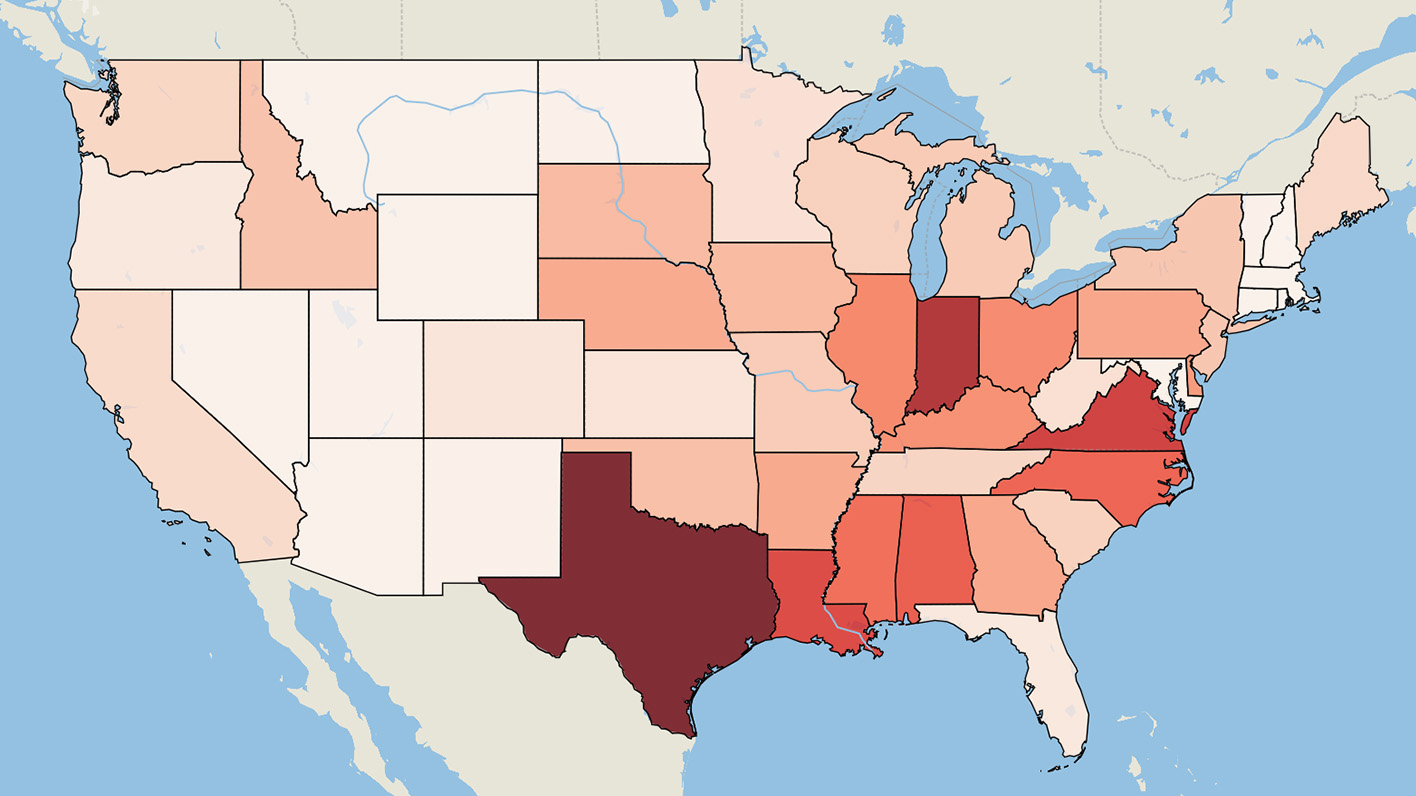Testimony on Green Cleaning Supplies
The Maryland Public Interest Group supports the passage of HB 1019, requiring a county board of education to adopt specified written policies relating to the procurement of green product cleaning supplies subject to specified exceptions; and requiring specified county boards to provide specified notice to the State Department of Education under specified circumstances.
Testimony for the Ways and Means Committee
HB 1019 – County Boards of Education – Green Product Cleaning Supplies – Written Policies
Position: FAVORABLE
Position: The Maryland Public Interest Group supports the passage of HB 1019, requiring a county board of education to adopt specified written policies relating to the procurement of green product cleaning supplies subject to specified exceptions; and requiring specified county boards to provide specified notice to the State Department of Education under specified circumstances.
Toxic chemicals in our cleaning products pose a significant health risk to children. A US Department of Education survey found that 1 in 5 schools had “unsatisfactory” air quality, and a 2009 report by the Environmental Working Group (EWG) linked poor school air quality to cleaning supplies. In this study, EWG found that the typical janitorial inventory released 457 distinct chemicals in the air- 24 of these air contaminants detected by the EWG have been linked to cancer, asthma, and other serious health concerns. This problem is compounded by the fact that cleaning supplies are not required to be labeled with ingredients, making it difficult for administrators to choose the toxic-free brand. It is clear that we must find safer alternatives to clean our schools in order to protect our children from serious health risks.
Toxic Chemicals in Cleaning Products Threaten Our Health
There are close to 100,000 industrial chemicals in commerce, most introduced to market without adequate scrutiny of their health and environmental impacts or consideration of safer alternatives. Decades of scientific research demonstrate chemical exposures have serious effects on public health, including asthma, cancer, developmental and reproductive disorders, and many other chronic disorders.
Asthma
More than 30 million adults (12 percent) and more than 10 million children (14 percent) in the United States have been diagnosed with asthma at some point in their lives.18 Asthma has been linked to a variety of chemical exposures in the everyday environment, from smog in city air to toxins released from cleaning products. In Maryland, asthma contributes to school absenteeism. Among parents of school-aged children with asthma, 16.8% reported that their child missed 1-2 days of school because of asthma during the past 12 months, and 5.7% said their child missed 8-29 days due to asthma (DHMH).
Six chemicals known to cause asthma (formaldehyde, styrene, methyl methacrylate, ethanolamine, alkyl dimethyl benzyl ammonium chloride, and didecyl dimethyl benzyl ammonium chloride) were present in cleaning products used in schools that EWG tested.
Cleaning products also contribute to asthma indirectly, by releasing a host of volatile organic compounds (VOCs) that form ozone when in the presence of other widely distributed air contaminants composed of nitrogen and oxygen. Ozone is the primary component of smog that can trigger asthma. Ozone was not detected in this study because the VOCs emitted by cleaning products were exposed to purified air free of nitrogen-oxygen air contaminants. These common contaminants undoubtedly affect
the air in classrooms across the U.S., providing an opportunity for ozone formation during and after use of cleaning supplies that release VOCs. Use of cleaning products can release volatile organic compounds at levels up to 100 times higher than found outdoors; these levels can even exceed safety limits established for industrial settings (Nazaroff 2006).
Cancer
Increasing incidence of many childhood cancers, including leukemia, non-Hodgkins lymphoma, and specific brain and nervous system cancers (Woodruff 2004; Ries 2007), are a clear cause for concern regarding children‟s exposures to chemicals linked to cancer. EWG air pollution tests of cleaning products used in schools, along with limited ingredient disclosure, revealed a total of 11 cleaning chemicals classified as known, probable, or possible human carcinogens. For example, Comet Disinfectant Powder Cleanser was found to release benzene, formaldehyde, chloroform, and three more cancer-causing chemicals.
An additional carcinogen, quartz, was not detected by testing, but is disclosed as an ingredient by the manufacturer. Quartz is an inhalation carcinogen. School children are unlikely to inhale quartz powder present in cleaning products, but custodians may experience more substantial exposures. The widely used graffiti remover Goof Off was found to emit ethylbenzene and 2-butoxyethanol, both linked to cancer.
Cleaning product ingredients can also be indirect sources of carcinogenic contamination. As described above, the known human carcinogen formaldehyde can form by mixing trace amounts of ozone in the air with terpenes, natural components of pine and citrus oil cleaners like Pine-Sol. Formaldehyde formation from terpenes is higher on smoggy days when ozone levels are high.
Developmental Toxicity
The developing brain is particularly vulnerable to disruptions that lead to disorders such as autism, attention deficit disorder, mental retardation and cerebral palsy. Industrial chemicals, including lead, methylmercury, PCBs, arsenic and toluene, are known causes of these disorders. Although no comprehensive testing has been done, more than 200 additional chemicals are likely to interfere with early brain development (Safer by Design).
Disorders of brain development can range in severity from severe mental retardation to more subtle problems such as attention deficit disorder. Small deficits in brain development could even result in simply the loss of a few IQ points – which could be hardly noticeable on an individual level, but have large consequences across society as a whole. The causes of these disorders are mostly unknown, but scientists are accumulating evidence that chemical exposures can interfere with the process of brain development in ways that produce functional deficits. Scientists have identified more than 200 chemicals as possible factors in neurological disorders in humans, and more than 1,000 such chemicals in laboratory animals (Safer by Design).
A number of chemicals that incorporate chlorine are toxic to the brain and nervous system. Xylene is a neurotoxic component of certain heavy duty cleaning supplies, like Goof Off Cleaner (CA VOC Compliant) and Shineline Seal Floor Sealer/Finish, which are in use in California schools. Toluene and chloroform, both emitted by Comet Disinfectant Powder Cleanser, are also neurotoxic chemicals. Fragrances used in many cleaning products can contain ingredients suspected of neurotoxicity as well (USHR 1986). Other neurotoxins commonly used in cleaning products are benzyl and isopropyl alcohol, detected in NABC Non-Acid Disinfectant Bathroom Cleaner, Waxie 21 Glass Cleaner, and Ripsaw; isopropyl alcohol is also a known ingredient of Pine-Sol Original Cleaner. Although limits have been set for these chemicals in food, no limits are in place for cleaners.
Reproductive Toxicity
Each year, about 7.3 million American couples have trouble becoming pregnant or carrying to full term, an increase of 20 percent over the last 10 years (Barrett 2006). Alarmingly, infertility is rising most rapidly for women under age 25. Increasing evidence indicates everyday exposures to reproductive toxins may play a role in escalating levels of infertility in the U.S.
Conventional cleaning supplies can contain a number of reproductive toxins. Phthalates, common ingredients in cleaner fragrances and in some floor finishes and window cleaners (WVE 2007) are reproductive toxins according to a number of animal studies (CERHR 2000; OEHHA 2007). In addition, epidemiological studies link a number of reproductive effects to phthalate exposure, including male reproductive system abnormalities (Swan 2005), altered sex hormone levels in baby boys and men (Main 2006; Duty 2005), and sperm damage in men (Duty 2003, 2004; Hauser 2007). Dibutyl phthalate is an ingredient in Shineline Seal Floor Sealer/Finish, one of the products examined in this study. While phthalates may be present in other cleaning products tested, especially as components of fragrance, these chemicals are not sufficiently volatile to be measured as air contaminants. Instead, phthalates released by cleaners are likely to contaminate dust (Rudel 2003; CDC 2005).
Exposures to toxins in dust are significant especially for younger children who are more likely to spend time sitting or playing on the floor (Butte 2002). According to the manufacturer, Shineline Seal Floor Seal/Finish contains up to five percent dibutyl phthalate, an alarmingly high level considering the potential this creates for children‟s exposure to a known reproductive toxin.
Other cleaner chemicals are linked to reproductive harm. Glycol ethers, including the widely used 2-butoxyethanol, are common cleaning solvents that impair fertility and harm development in animal studies (EPA 2000; NTP 2000). Other studies find that men exposed to glycol ethers on the job are more likely to have reduced sperm counts, while pregnant women exposed on the job are more likely to give birth to children with birth defects (Cordier 1997; CDHS 2007). 2-Butoxyethanol was detected in six conventional cleaning products by EWG (Simple Green Concentrated Cleaner/Degreaser/Deodorizer, Glance HC Glass and Multi-Surface Cleaner, Shineline Seal Floor Sealer/Finish, Goof Off Cleaner (CA VOC Compliant), Pioneer Super Cleaner, and Waxie 21 Glass Cleaner), and one certified green product (Waxie Green Floor Finish). Only five cleaning products (Citrus-Scrub 90, Comet Disinfectant Powder Cleanser, Glance NA Glass & Multi-Purpose Cleaner, Marauder Environmental Cleaner, and NABC Non-Acid Disinfectant Bathroom Cleaner) were found by EWG to be free of all glycol ethers examined by laboratory tests.
Quaternary ammonium compounds (quats) are antibacterial pesticides commonly used in disinfectants. A quat-based disinfectant called Virex, similar was recently identified by noted scientist Dr. Patricia Hunt as the cause of a severe decline in the fertility of a laboratory mouse population – preliminary evidence that quats may be reproductive toxins (Hunt 2008). Two disinfectants in the EWG study, NABC Non-Acid Disinfectant Bathroom Cleaner and Virex II 256, list quats as ingredients.
Hormone Disruption
Signs of hormone disruption are evident in girls growing up all over America. Over the last four decades, the age at which girls begin to develop breasts has declined by one-to-two years (Steingraber 2007), with African-American girls typically developing at an earlier age than Caucasian girls. Over the same 40-year period, the age at which girls in the U.S. begin menstruating has declined by a few months, with substantial variation by ethnicity (Steingraber 2007). Early breast development, as well as the appearance of pubic hair at a young age, has become so common that in 1999 the clinical definition of early-onset or precocious puberty in the U.S. was reduced from age 8 to age 7 for Caucasian girls, and from age 7 to age 6 for African-American girls (Kaplowitz 1999). A girl who begins puberty at an early age is at greater risk for several adult illnesses, including breast cancer (Wang 2005; Steingraber 2007; Golub 2008) and polycystic ovary syndrome (Ibáñez 1997; Kousta 2006; Steingraber 2007; Golub 2008), a leading cause of pelvic pain and infertility.
Scientists and medical professionals increasingly identify exposures to hormone-disrupting chemicals as a significant factor in unnaturally accelerating this critical period of development. Preliminary research on people suggests that exposures to one particular class of hormone disrupting chemicals, phthalates, may be linked to early puberty in girls (Colon 2000).
Eight of the hormone-disrupting chemicals identified by a key European Commission report (European Commission DG ENV 2000, 2007) were detected as air contaminants or disclosed as ingredients of nine cleaners tested by EWG. Shineline Seal Floor Sealer/Finish contained three different suspected hormone disruptors (styrene, ethylene glycol, dibutyl phthalate), and two such chemicals were found in Comet Disinfectant Powder Cleanser (1-chloro-2,3-epoxypropane, benzophenone), Simple Green Concentrated Cleaner/Degreaser/Deodorizer (phenol, ethylene glycol), and Goof Off Compliant) (benzophenone, N-Ndimethylformamide).
HB 1019 Will Prevent Harmful Exposures for Students , Faculty, and Staff
Under current law, “green product cleaning supplies” are defined as environmentally preferable cleaning and sanitizing supplies. HB 1019 would redefine “green product cleaning supplies” as “environmentally preferable cleaning and cleaning maintenance products intended for routine cleaning and cleaning maintenance.” This ensures that the green cleaning supply standards are not just applied to chemicals used for occasional sanitization, but rather chemicals used routinely and frequently throughout Maryland schools.
HB 1019 lists nonprofit, standard-setting, certifiers of green products as examples of avenues to obtain green product cleaning supplies. The bill also makes it clear that if a school is not capable of procuring green product cleaning supplies for practical reasons (budgetary or otherwise), the school may provide annual written notice.
HB 1019 prevents “greenwashing” by clarifying the certification requirements for green cleaning products. Because marketing claims are unregulated, only certified green products are required to meet comprehensive health and environmental standards. These standards are updated to reflect the latest science on toxic chemicals, ensuring product improvement over time.
Certified green products contained fewer known toxic ingredients, according to EWG‟s laboratory tests and company documents. On average, green general purpose cleaners contained one-fourth as many chemicals with documented health concerns as similar conventional products. Among all cleaning supplies tested, certified green products contained one-third the chemicals with documented health concerns. Leading green certifications include Green Seal (GS-37, Environmental Standard for Industrial and Institutional Cleaners) and EcoLogo (CCD-146, standard for Hardsurface Cleaners, and CCD-147 standard for Hard Floor Care Products). Green Seal GS-37 and EcoLogo CCD-146 establish environmental and health requirements for general purpose, restroom, glass, and carpet cleaners, intended for routine cleaning of schools, offices, and institutions.
EcoLogo CCD-147 establishes similar requirements for floor polish, strippers and other floor maintenance products. The cleaning product criteria state that certified products will not contain ingredients that are carcinogens, mutagens, or reproductive toxins; heavy metals such as lead and cadmium; common cleaning chemicals of concern including 2-butoxyethanol, alkylphenol ethoxylates, and phthalates; ozone depleting chemicals; and optical brighteners. Green Seal‟s standard was recently revised to include a prohibition on chemicals that are known to cause asthma through a process called respiratory sensitization. (Green Seal has also established a GS-40 floor care products standard, with less stringent criteria than those outlined above.) The EcoLogo standard also prohibits a number of ingredients based on their suspected hormone-disrupting properties.
Green Seal and EcoLogo standards, which are revised periodically, also establish specific limits on ingredients for acute toxicity; skin absorption; inhalation toxicity; toxicity to aquatic life; bioaccumulating compounds; nutrient pollution; and fragrances. Additional criteria in these standards also limit a product‟s pH, combustibility, volatile organic compound (VOC) content, and biodegradability.
Green Seal, an independent group that certifies green cleaners, has taken into account children‟s special susceptibility to toxic air contaminants in designing its cleaning product standards (Green Seal 2008). According to the latest version of Green Seal‟s certification standard, certified green products are prohibited from containing ingredients classified by AOEC as both asthmagens and sensitizers.
Green Seal-certified cleaning supplies cannot contain ingredients classified as carcinogenic by the Environmental Protection Agency (EPA), the National Toxicology Program (NTP), the Occupational Safety and Health Administration (OSHA), or the International Agency for Research on Cancer (IARC). These products also cannot contain ingredients known to produce or release these carcinogenic compounds (Green Seal 2008). EcoLogo prohibits formulation or manufacture of certified green cleaning products with any carcinogens listed by IARC (EcoLogo 2008).
EcoLogo specifically prohibits a number of typical cleaning product ingredients found on the AOEC list (EcoLogo 2008). While green cleaning products generally contain far fewer asthmagens than conventional products, air contaminant tests did detect one such chemical, methyl methacrylate, in the EcoLogo-certified Waxie Green Floor Finish. This chemical is not specifically prohibited by EcoLogo criteria, suggesting that a more comprehensive prohibition of AOEC asthmagens might strengthen the EcoLogo standard and better protect public health.
EcoLogo certified products are prohibited from containing phthalates, quats, and some glycol ethers and their acetates (2-butoxyethanol, along with ethylene glycol monomethyl ether, ethylene glycol monoethyl ether, and ethylene glycol monopropyl ether) (EcoLogo 2007, 2008).
Successful State Procurement of Safe Cleaning Supplies
Lax federal health protections have led to a variety of state efforts to protect children, faculty, and staff from toxic cleaning products in schools. This bill follows a precedent set by eight other states that have passed laws encouraging the use of green school cleaning supplies, while New York and Illinois have mandated the use of these types of products. In 2009, Maryland passed the Act Concerning County Boards of Education – Procurement of Green Product Cleaning Supplies (House Bill 1363), requiring school districts to encourage use of green cleaning supplies, but to their own definition of “green.” HB 1019 bill is the next logical step.
Eight states have passed laws on the subject:
• New York State‟s 2005 Green Cleaning Act requires elementary and secondary schools to use green cleaning and maintenance products, under state guidelines.
• Illinois‟ 2007 Green Cleaning Schools Act requires elementary and secondary schools to develop a green cleaning policy and purchase and use products consistent with state guidelines for green cleaning and maintenance products for schools. School districts that can prove that using green cleaners would pose a financial hardship may receive an exemption.
• Maine‟s 2007 Policy to Encourage the Use of Safe Chemicals in Public Schools requires the State to publish information on green cleaning products and procedures, but does not mandate green cleaning in schools.
• Missouri‟s 2008 Green Cleaning for Schools Act requires the State to publish information on green cleaning products and procedures, but does not mandate green cleaning in schools.
• Maryland‟s 2009 Act Concerning County Boards of Education – Procurement of Green Product Cleaning Supplies requires the State‟s elementary and secondary public schools to use cleaning products with positive environmental attributes. Local Boards of Education are responsible for defining what may be considered a green product.
• Connecticut‟s 2009 Green Cleaning Products in Schools Act requires elementary and secondary public schools to use certified green cleaning and maintenance products, according to state guidelines.
• Hawaii‟s 2009 House Bill 1538, Relating to Environmentally-Sensitive Products, requires the Department of Education to give first preference for Green Seal certified green cleaning products for use in elementary and secondary public schools.
• Nevada‟s 2009 Act Requiring School Districts to Use Certain Environmentally Sensitive Cleaning and Maintenance Products mandates that all public elementary and secondary schools ensure that only green cleaning and maintenance products are used to clean their floor surfaces. The State‟s Department of Education is required to adopt regulations that define green products and provide districts with a list of approved products. School districts that can prove that using green cleaners would pose a financial hardship may receive an exemption.
Conclusion
This bill protects children‟s health and the health of school workers. Alternatives will release fewer harmful chemicals and can ultimately prove to be more cost-effective than traditional cleaners. Maryland PIRG urges a favorable report on HB 1019.
References:
Cheryl De Pinto, MD, MPH; Yvette McEachern, MA; Rachel Hess-Mutinda, MSW; Linda Nwachukwu, MPH
2008. MARYLAND ASTHMA SURVEILLANCE REPORT. Maryland Department of Health and Mental Hygiene
Family Health Administration Maryland Asthma Control Program.
Environmental Working Group. Greener School Cleaning Supplies = Fresh Air + Healthier Kids New Research Links School Air Quality to School Cleaning Supplies. http://www.ewg.org/schoolcleaningsupplies/fullreport
Note: In text citations are from the EWG Report. 2009.
Growing Up Toxic: Chemical Exposures and Increases in Developmental Disease. Written by: Travis Madsen, Frontier Group Elizabeth Hitchcock, U.S. PIRG Education Fund, with contributions from Jenny Levin, Maryland PIRG Foundation. March 2011
Safer by Design: Businesses Can Replace Toxic Ingredients through Green Chemistry. Written by: Travis Madsen and Benjamin Davis, Frontier Group Shelley Vinyard and John Rumpler, Environment America Research & Policy Center. 2011
Topics
Authors
Jenny Levin
Find Out More

2024 Legislative Agenda and Priorities

Superfund Back on Track

The Threat of “Forever Chemicals”

